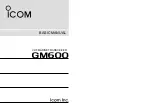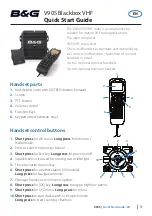
SeeGull
®
IB
flex
®
Reference Manual
PCTEL, Inc.
Page 11 of 42
Rev T
measurements for highly-tuned analysis of
individual parts of the RF signal. EPS
features include:
▪
Absolute Time Stamp
▪
Auto and Immediate Measurement
Modes
▪
Ability to set both Time and Frequency
parameters
▪
Measure Frequency Spans from 7.5 kHz
to 20 MHz user selectable in multiples of
2.5 kHz
▪
Measures Time Periods from 1 chip (50
µs) to 20,000 chips (1sec)
Spectrum Analyzer Option (OP603),
IBflex Spectrum Analyzer (08900-E-
SPA/08900L-E-SPA)
The built-in Spectrum Analyzer feature
provides an effective means to detect and
troubleshoot frequency-related problems.
Spectrum Analysis is also available as a
package with the scanner that enables
spectrum analysis of the wide band
capability of the scanner (08900-E-
SPA/08900L-E-SPA). The Spectrum
Analyzer shows a wealth of information
about the signal spectrum that is not
obtainable from the standard channel power
measurement. The Spectrum Analyzer
measures and reports power spectral
density using frequency domain techniques
(a segmented FFT approach that ensures
various resolution bandwidths and fast
update rates), whereas RSSI
measurements use analog and digital filters
to select the right frequency band and
subsequently measure total power.
One advantage of this approach is that the
Spectrum Analyzer can analyze the fast-
changing spectrum of an unstable
transmitter. The RSSI measurement in this
case will most often show a normal smooth
picture, as it averages a limited set of data
over time. The Spectrum Analyzer,
however, if used with an appropriate
resolution bandwidth, will reveal erratic
signal behavior due to its fast update rate
and non-averaged data.
The user may set the resolution bandwidth
to 5, 10, 20, 40, 80 or 160 kHz or 2, 4, or 8
MHz. Output data may be set to an average
of 1, 2, 4, 8, or 16 sweeps.
LTE Power Analysis (OP634)
LTE Power Analysis is available for TD-LTE
and provides power of the resource block
and slot of the TD-LTE frame. This enables
users to identify interference that is time
(slots) or frequency (RBs)-selective, to
obtain a snapshot of overall traffic levels,
and to determine whether the base station
is properly using the available resources.












































